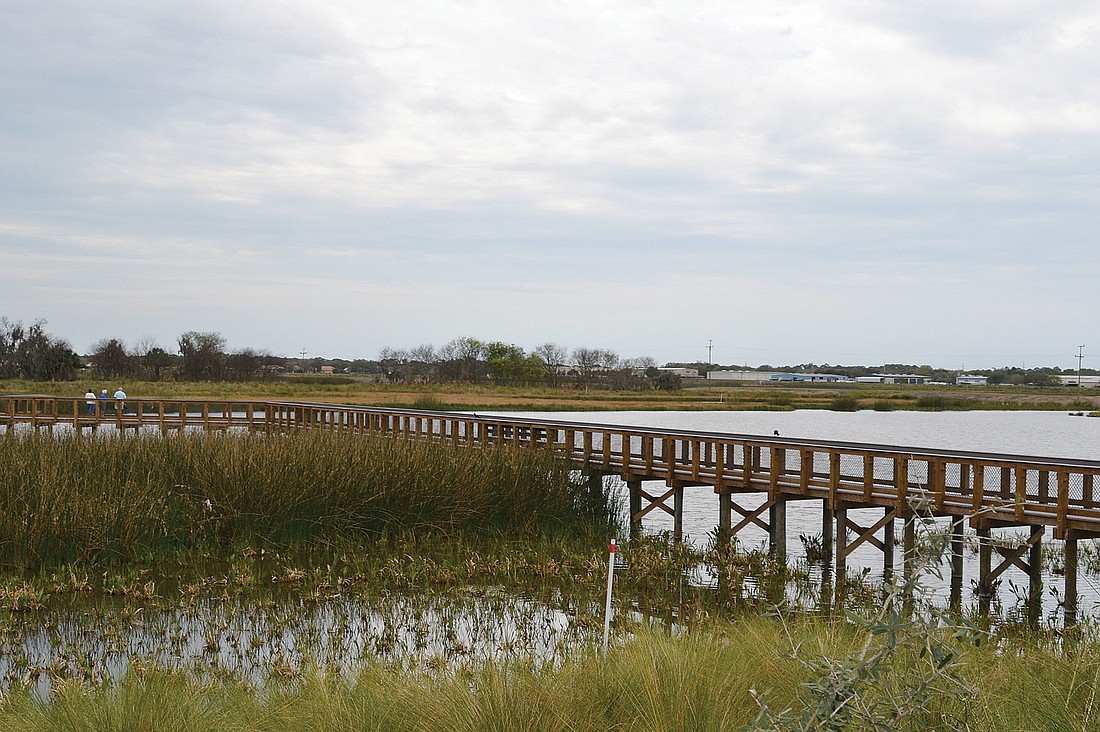- April 16, 2024
-
-
Loading

Loading

The Celery Fields, a 300-acre Sarasota County stormwater collection zone that has morphed into one of the county’s most beloved parks, is becoming so popular that residents are clamoring for even more amenities.
The man-made stormwater site has become home to more than 200 diverse bird species, allowing the county to turn it into a recreational facility.
"Over the years, the county has created a 100-acre wetlands restoration area on the site, planted more than 20,000 aquatic plants, added a gazebo, walking/biking trails and boardwalks for visitors, so they can get closer to the bird habitats. County workers also have added tons of dirt to the site, to create what some residents to refer to as “Sarasota Mountain.” Walkers and bikers trek to the top of the hill, so they have a high vantage point from which to observe the birds and other wildlife.
The park has become so popular that the county has future plans for additional walking and biking trails, fishing, kayaking and wildlife-viewing centers.
The site became part of the Sarasota Fruitville Drainage District in 1921. A 2,000-acre experimental farm for growing celery was constructed in the marshes, complete with canal dredging. Celery was grown on the site until 1995, when the county purchased the property to make way for its stormwater project.
Enclaves resident Tom Rigby, who lives a half-mile from The Celery Fields, sent an email to the Sarasota County Commission Feb. 8, praising the park and asking for more features to accommodate the park’s popularity.
“As more people discover how wonderful the park is, parking has become a problem,” Rigby wrote. “Vehicles are parking off the road or wherever they can find space.”
The park has only a 15-space lot off Palmer Boulevard to accommodate motorists. However, visitors are allowed to park their cars along the rights of way near The Celery Fields, which sits just east of Interstate 75, between Fruitville Road and Palmer Boulevard.
Rigby suggested in his email that the county could create more vehicle spaces by opening up a fence on the east side of the parking lot. He also suggested the county add a crosswalk on Palmer Boulevard, to provide safer pedestrian access from Sarasota Mountain to The Celery Fields boardwalks.
George Tatge, a manager of the Sarasota County Parks and Recreations Department, said county staff was open to all suggestions, adding that the facility is looking more like a regular park.
“People have to remember this is a regional stormwater facility that has also morphed into a world-class birding location and a very popular park over the past year,” Tatge said.
“The Celery Fields always has been and will continue to be a birding habitat,” Tatge said. “All the water, grasses and natural resources make it a popular place for birds and birdwatchers alike.”
Rigby’s suggestions are good ones to consider, Tatge said.
“A walkway is a good point to bridge the two parcels,” he added. “There’s also parking issues that must be worked out.”
Nonetheless, residents are happy with the continuing transformation of The Celery Fields.
“My compliments on the great job the county has done with this project,” Rigby wrote.
Audubon cites value of Celery Fields
The Sarasota Audubon Society points to The Celery Fields as one big reason it needs donations: The organization has been working to help protect the birds that call the county park home."
In a Feb. 9 letter to members, Sarasota Audubon Society President Jeanne Dubi states: “Because of your commitment to Sarasota Audubon, special places like The Celery Fields remain home or feeding grounds for hundreds of bird species, home in the hearts and minds of our nature-loving citizens and home away from home for visitors who want to experience natural Sarasota.”
For more information, contact the Audubon Society at 364-9212.